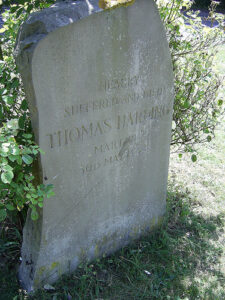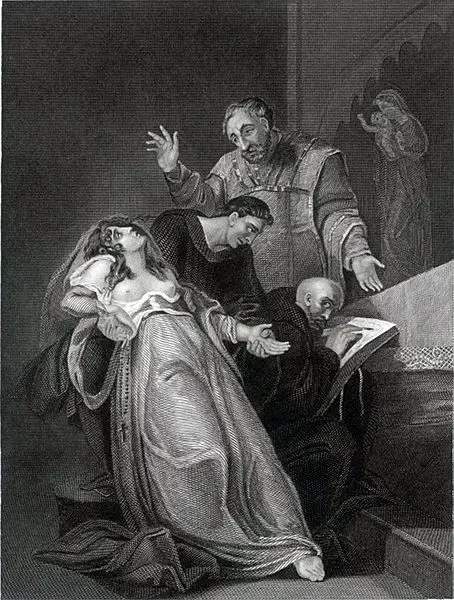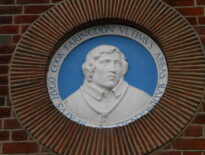 This week’s Monday Martyr is Lollard Thomas Harding.
This week’s Monday Martyr is Lollard Thomas Harding.
Harding was in his sixties when he was sent to be burnt at the stake for heresy at Chesham, in Buckinghamshire, on 30th May 1532, in the reign of King Henry VIII. Thankfully, his suffering was cut short when he was killed by a blow to the head when a bystander threw a billet of wood at him.
Here are some facts about Thomas Harding, or scroll down for a 60 second video on him:
- Harding and his wife, Alice, first came to the attention of the authorities, in particular, William Smith, Bishop of Lincoln, in 1506. Martyrologist John Foxe explains that they and some others spoke "against idolatry and superstition" and after they had "abjured", they "were taken, and compelled, some to bear fa*gots, some were burnt in the cheeks with hot irons, some condemned to perpetual prison, some thrust into monasteries, and spoiled clean of all their goods, some compelled to make pilgrimage [...]".
- In 1515, after again getting into trouble for their religious ideas with the bishop, they recanted and again were given penance. According to their penance, they were not allowed to live outside of Amersham, for their rest of their lives they were to "fast bread and ale every Corpus Christi even", and every Corpus Christi day they were to go on pilgrimage to Ashridge and make their offerings. They stuck to these rules from 1515 to 1522 apart from Alice not doing her pilgrimage in the last year.
- Harding “dissembled” in 1522. Apparently, he had made an oath to "detect others", but would not disclose names to the authorities. His penance was to wear a badge or patch of green cloth on his right sleeve. This patch was embroidered with a fa*got. He was to wear it for the rest of his life.
- Things were quiet for the Hardings until 1532. Around Easter, while people went to church to celebrate, Harding went to the woods to worship with a book of English prayers. He was seen and officials found further heretical books at his home. He had broken his penance again. He was sent to the Little-ease, the bishop's prison, where Foxe says he suffered "hunger and pain" before being brought before John Longland, Bishop of Lincoln, who "condemned him for relapse to be burned to ashes".
- Harding was taken to Chesham, where Rowland Messenger, vicar of Great Wycombe, preached a sermon in front of him before taking him up to the high altar and questioned regarding his views on the sacrament, "whether he believed that in the bread, after the consecration, there remained any other substance than the substance of Christ's natural body, born of the Virgin Mary?". Harding replied to Messenger, "The articles of our belief do teach us, that our Saviour Christ was born of the Virgin Mary, and that he suffered death under
Pilate, and rose from death the third day; that he then ascended into heaven, and sitteth on the right hand of God, in the glory of his Father." - Harding was executed on Corpus Christi eve, 30th May 1532. He was chained to the stake, a wooden cross placed into his hands, and then he addressed the people, asking them to pray for him. He then forgave those who were persecuting them and commended his spirit to God. As they lit the fire, someone in the crowd threw a billet of wood at him. It hit him on the head and "dashed out his brains". Foxe thinks that people carried billets of wood to his burning because a proclamation had been made at another recent burning that anyone who carried wood to the burning of a heretic "should have forty days of pardon".
- Foxe records that Harding's burning was celebrated at the Corpus Christi eve church service.
Image: A memorial stone to Thomas Harding in Chesham.



Thank you for recording this. Thomas was my ancester and I have collected all that I can find on he and his wife who was also burned at the stake. I would love to be able to print this to add to my folder for our children but apparently that is not possible .
If there is more information available, please contact me ,
from Karen Wise…